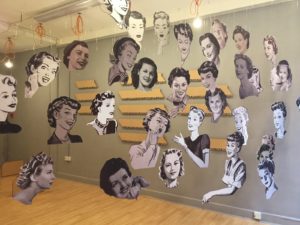Aviva Leeman: Bringing You Better Living
Bringing You Better Living was a site-specific installation at Ten Grand Arcade by Aviva Leeman. The work is inspired by the Charles Hasler collection at MoDA.
The commission is a collaborative project which was informed by the site and character of the gallery itself. The Hasler Gallery is located in a retail unit in a 1930’s arcade – an architectural construct in the history of the development of modern shopping.
View of the Grand Arcade, 1980. Courtesy of the Friern Barnet & District Local History Society. Photographer Doug Rose.
Bringing You Better Living at The Hasler Gallery. Photo courtesy of Aviva Leeman.
The project was born out of an investigation into language during developments in the retail industry. Aviva’s research focused on publications of the time – in particular Shelf Appeal magazine, published between 1934 and 1938, a trade magazine for the packaging industry. Aviva also consulted Charles Hasler’s specimens of display letters produced for the Festival of Britain.
Shelf Appeal
The installation at The Hasler Gallery

Aviva’s installation The Silent Salesman laid bare product packaging and the display system as sites and channels of communication in the context of the shop. The texts were extracted from industry adverts aimed at designers and manufacturers, extolling the abilities of the new packaging materials and technologies to sell. Between the wars, the package, shelf and counter display became objects of intense imaginative interest, the bearers of a new commercial aesthetic, and the language used reveals the optimism felt.


